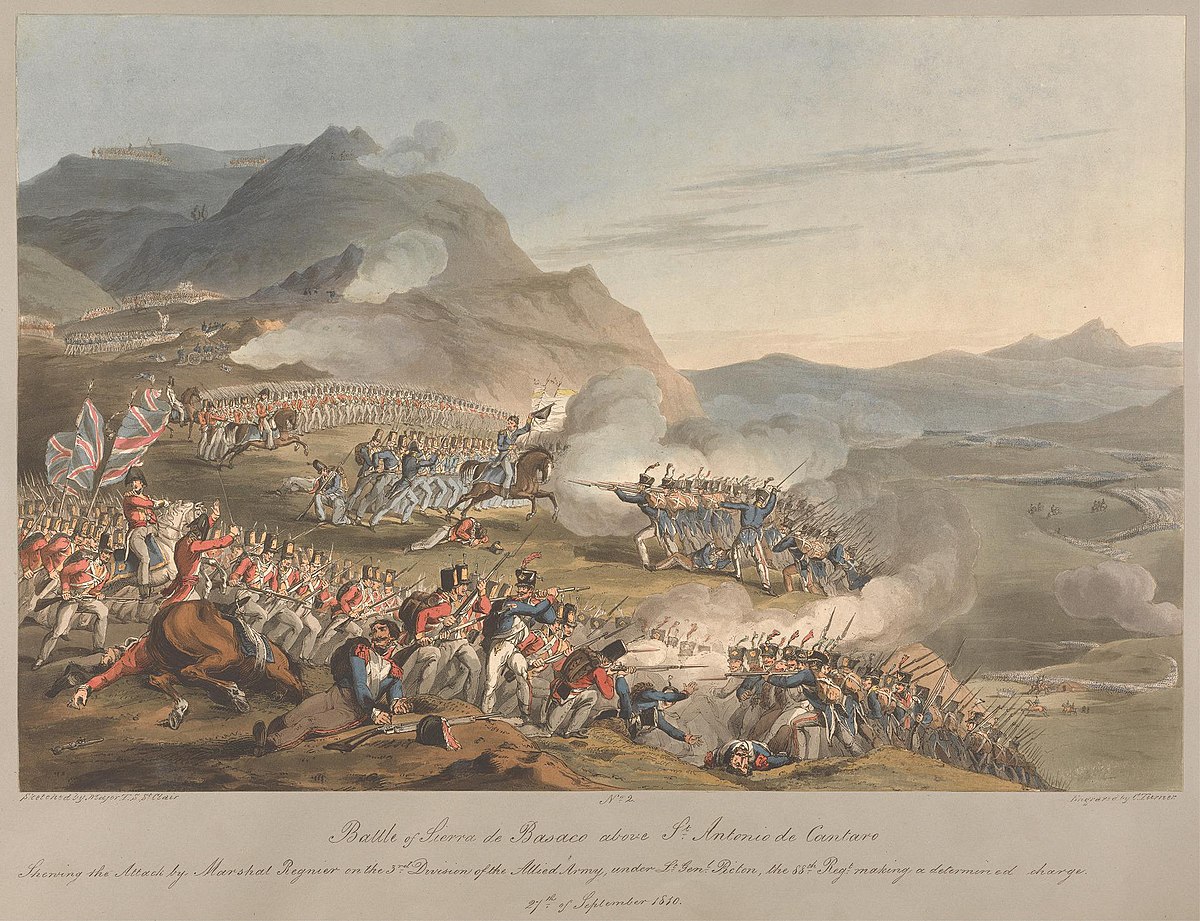
Third Portuguese campaign
Buçaco, Luso, PortugalConvinced by intelligence that a new French assault on Portugal was imminent, Wellington created a powerful defensive position near Lisbon, to which he could fall back if necessary. To protect the city, he ordered the construction of the Lines of Torres Vedras—three strong lines of mutually supporting forts, blockhouses, redoubts, and ravelins with fortified artillery positions—under the supervision of Sir Richard Fletcher. The various parts of the lines communicated with each other by semaphore, allowing immediate response to any threat. The work began in the autumn of 1809 and the main defences were finished just in time one year later. To further hamper the enemy, the areas in front of the lines were subjected to a scorched earth policy: they were denuded of food, forage and shelter. 200,000 inhabitants of neighbouring districts were relocated inside the lines. Wellington exploited the facts that the French could conquer Portugal only by conquering Lisbon, and that they could in practice reach Lisbon only from the north. Until these changes occurred the Portuguese administration was free to resist British influence, Beresford's position being rendered tolerable by the firm support of the Minister of War, Miguel de Pereira Forjaz.
As a prelude to invasion, Ney took the Spanish fortified town of Ciudad Rodrigo after a siege lasting from 26 April to 9 July 1810. The French re-invaded Portugal with an army of around 65,000, led by Marshal Masséna, and forced Wellington back through Almeida to Busaco. At the Battle of the Côa the French drove back Robert Crauford's Light Division after which Masséna moved to attack the held British position on the heights of Bussaco—a 10-mile (16 km)-long ridge—resulting in the Battle of Buçaco on 27 September. Suffering heavy casualties, the French failed to dislodge the Anglo-Portuguese army. Masséna outmaneuvered Wellington after the battle, who steadily fell back to the prepared positions in the Lines. Wellington manned the fortifications with "secondary troops"—25,000 Portuguese militia, 8,000 Spaniards and 2,500 British marines and artillerymen—keeping his main field army of British and Portuguese regulars dispersed to meet a French assault on any point of the Lines.
Masséna's Army of Portugal concentrated around Sobral in preparation to attack. After a fierce skirmish on 14 October in which the strength of the Lines became apparent, the French dug themselves in rather than launch a full-scale assault and Masséna's men began to suffer from the acute shortages in the region. In late October, after holding his starving army before Lisbon for a month, Masséna fell back to a position between Santarém and Rio Maior.
